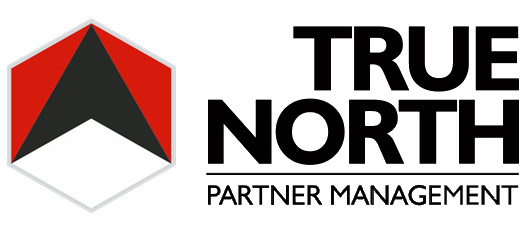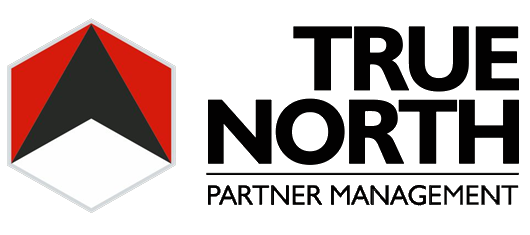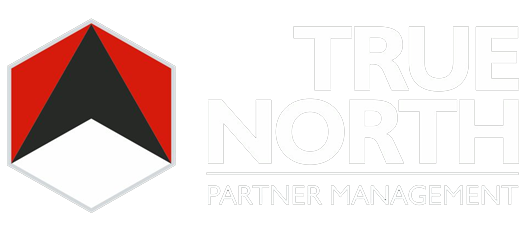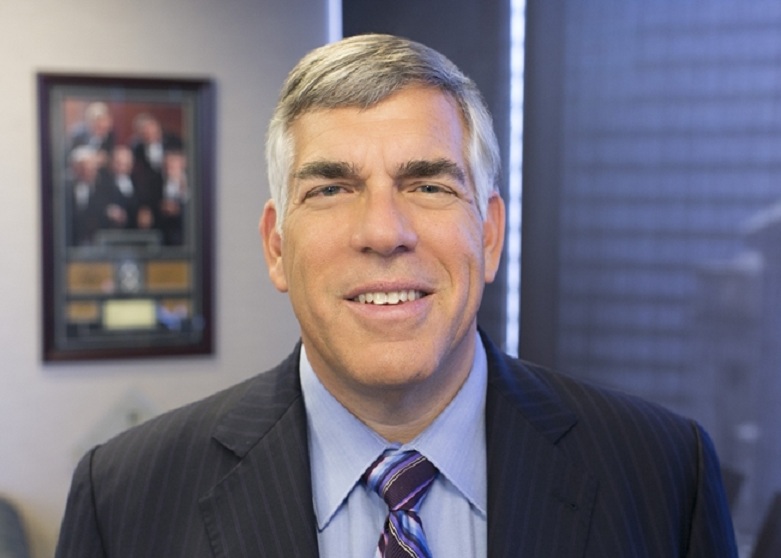The following post originally appeared on Forbes | September 15, 2015
A brand for a company is like a reputation for a person. You earn reputation by trying to do hard things well. ~Jeff Bezos
In 2011, Nixon Peabody’s CEO and managing partner, Andrew Glincher, came to a conclusion that (no doubt) many other law firm leaders experience at some point: It has to be difficult for general counsel to differentiate between many law firms. When you take a hard look at the available information, there isn’t much to go off of. At the “nitty-gritty” level of decision-making, American Lawyer’s data is hardly helpful. There are Chamber’s rankings and Legal 500, but they will take you only so far.
With the continued evolution of Big Legal Data – information relating to RFPs, auctions, project-management, bill rates, utilization rates, write downs, and any other legal-consumption-oriented data that is being collected, aggregated, and made available to legal consumers – purchasing decisions are, and will continue to be, more informed. In the meantime, what can a firm do to gain market share?
In Nixon Peabody’s case, they’ve embarked on a mission to better define, and take control of, the perception the market has of them as a legal services provider. This entailed a major re-branding effort that is set around three working principles: Client industry focus, collective intelligence, and perhaps most importantly, thinking ahead, i.e., predictive, proactive counsel. Today I speak with Glincher to see how their journey is going, and to get a better picture of the processes that they use to guide them. See a condensed version of our exchange below:
On Differentiation In the Market
Parnell: This is one of the biggest questions right now in the market: how do you differentiate yourself? While differentiation has been incredibly difficult throughout the legal market’s history, contemporary pressures have made it even more so…
Glincher: The differentiation question is one that I started focusing on when I became CEO and managing partner of our firm. One night, early on in my role, I opened up American Lawyer magazine and took a look at the AmLaw100 firms from the perspective of a client or prospect. While there are a few firms that are different, the majority of law firms look a lot alike on paper. They have excellent lawyers, offices in similar locations, and the same practice areas. The question was, how do we set our firm apart from the competition and explain our value to our clients?
Four and a half years ago, we embarked on an exercise to do so, the result of which is our new brand. It can be summed up in two words: “sense ahead.” Lawyers have long viewed the world based on precedent. But we’re focused on building a law firm fit for the future. This branding effort was focused on thinking differently, acting differently, and making a difference for our clients.
You need to be predictive and proactive. It’s not just precedent; you need to understand your client’s business enough to be predictive. What are they going to see on the horizon in the next three to five years? How can you help them? Are there laws that are going to affect their business? How can you help change those laws? How do you create new products? It’s about understanding what it is down the road, differentiating, collaborating, and working together. Having a trusted advisor relationship, and really knowing your client’s business is what is going to create value. Lawyers need to be more than an expense to their clients.
On Nixon Peabody’s Strategy
Parnell: When you’re looking at your firm’s expansion — whether it’s actual footprint growth or practice portfolio — are there particular areas that you’re focusing on over the next one, two, or three years, from a strategic standpoint?
Glincher: Our strategic priorities are focused on uncovering significant opportunities to better serve our clients, which could include developing a new service area or having deeper resources in a specific location or practice. For example, in February we merged with Ungaretti & Harris, one of the largest mid-sized firms in Chicago with more than 100 attorneys who offer a broad range of services including corporate and business transactions, health care, intellectual property, real estate, public finance, and litigation. We already had a smaller office, there, focused mainly on intellectual property, and we were seeing increasing client demand in other practice areas, so growing our presence in Chicago was a top priority for us. We’re now a full-service office in Chicago. Our growth in Chicago is the result of our client focus and prioritizing their needs for services.
Beyond Chicago, we are focused on growing our presence in New York City as well as in California where we have multiple offices to address increasing client needs and business interests in those regions. We have a great success story in Los Angeles, one of the toughest areas in terms of expanding law practices, where we’ve had significant attorney net growth over the past couple of years.
On Nixon Peabody’s Strategy Development Process
Parnell: Your actual process for strategy development — and you may not feel comfortable going too deeply with this — but what is your actual process? How do you go about developing strategy at Nixon Peabody?
Glincher: Strategic planning is a continual process. You want to make sure that your strategy, and where you’re going to focus, has at least these two elements: One is client demand. You want to make sure it’s an area where your services are going to be needed. Two, you want to make sure you have sufficient talent to compete successfully in that area. Law firms like to be something for everybody, but the most successful law firms right now are more focused on the things they do really well. I see that trend continuing.
From day one in my role as CEO and Managing Partner I’ve said, “Play to your strengths and don’t pretend to be something you are not.”
In addition to working with firm leaders from our management and policy committees to create our strategic plan, I also encourage input from colleagues from all levels on major decisions on strategy, office locations, and other matters. To that point, we invited all attorneys and senior staff to our annual meeting last year. Out of that meeting came “NP 2020,” a committee of attorneys and staff from all levels who are focused on attracting and retaining top talent, enhancing our market reputation, and tapping our collective intelligence to best serve our clients.
On Associate And Junior Partner Development
Parnell: You have merged. You’ve seen a fair share of lateral growth, too. What are you doing with your associates, and even junior partners, to foster their growth and expand organically?
Glincher: We have grown, David, as you point out, but I’ve always viewed our best opportunity to be with our existing talent. With the Ungaretti merger aside, we hire a number of laterals each year, but we are primarily focused on the success of our existing talent.
We have a strong summer associate program, and this year, our incoming first-year associate class has 26 law clerks. Our training and mentoring programs continue well beyond our summer associates and first-year associates. By example, we have partnered with the business school at Northeastern University to teach our attorneys about business. We’re honest about the process, and we know not everyone who comes here for a summer program, or as a first year associate, plans to stay. However, if somebody really wants to be here, we want them to have a future here and we’re taking on small classes to make that a reality.
On Challenges With Bridging The Generation Gap
Parnell: There is often a loaded relationship between the Baby Boomers and Gen X-ers and Millennials — the Boomers and Millennials, in particular. What are some of the challenges that you’ve dealt with between the generations, and how have you gone about making sure everybody plays nice in the sandbox?
Glincher: I’ve been really inspired by how my partners have dealt with change, especially working with our younger talent. Five years ago people would just say that they’d “have to learn to work like us.” Well, it doesn’t really work that way, and you’re not going to maintain the workforce that you want.
A lot of the millennials work different hours, but they work hard. I think it’s a misnomer, and maybe a little undue prejudice, that they don’t. They just work differently. Millennials want more independence in the workplace and greater flexibility for when and how they work. Technology enables them to work around the clock in different locations. Some people work better early in the day while some thrive on late nights. And, some may do their best work after a midday workout or yoga class.
In order to succeed in attracting and retaining top talent, we must address the intergenerational differences and work-life desires of each generation. I think we’ve adapted very well. We’ve been very supportive in creating different working arrangements for our colleagues who want to spend additional time with their families.
People who are good at what they do, fit the flexibility into their lives quite well. They’re professional, they get the job done, whatever time, and wherever they are.
On The Future of Office Space
Parnell: Do you see, eventually, an environment where the gross majority of the law firm is simply working remotely? Where the technology’s strong enough that people can simply work remotely, and real estate overhead is almost non-existent for law firms?
Glincher: There’s no question that companies are putting their real estate spend on a diet. In June, we opened our new Washington, D.C. office and it’s a great example of how “BigLaw” is looking to move to smaller space. In addition to reducing our square footage by a third, the project has broken many law firm taboos such as single-size offices and glass walls to make less square footage feel bigger and provide more access to natural light and views.
Overall, as a firm, I believe we’ll need about half of our existing space ten years from now. So I do think we will see a significant change in real estate spend and how we are using our office space. I do not see complete elimination of office space, though, because so much of our practice depends on working in teams and that teamwork is best when it can be done in person.
Thanks to technology, people can work from anywhere at any time. However, a lot can be lost in translation. I encourage my colleagues to pick up the phone and speak with and visit clients, meet with their colleagues face-to-face when they have a question, and to try to do more in person when possible.
In our business, if you’re trying to provide advice in emails, there’s so much between the lines. And there’s no substitution for an actual conversation. As a general rule, if I am responding to a client’s email and the response is more than a few sentences, I’ll say “let’s discuss,” and I initiate a call or meeting.
On Governance Within Nixon Peabody
Parnell: From a governance model standpoint, what does Nixon Peabody look like? How are major decisions made within the firm?
Glincher: The day-to-day operations of the firm are run by a management committee. I chair the committee, and I am the chief executive officer. Our management committee includes heads of each of our departments — business, litigation, and real estate — as well as our chief operating officer, chief financial officer, and chair of our professional personnel committee.
In addition to our management committee, as I mentioned earlier, we also have a policy committee that serves as an oversight and governing board for our 700+ attorney firm, and includes an elected attorney from each of Nixon Peabody’s 16 offices. I work closely with our policy committee to establish our mission and long-term firm goals. Among its duties, the policy committee selects the firm’s managing partner, approves the opening and closing of firm offices, and recommends candidates for partnership.
I’m transparent and collaborative. Consensus building and the trust of my colleagues is most important to me.
On The Firm’s P&L
Parnell: How do you handle P&L in the firm as a whole? Is this done via offices? Practice areas?
Glincher: You know when you’re doing well or not doing well. I’ve got to know our business, and I don’t need a P&L to tell me what’s working. I focus on what we’re doing for revenue: What are the prospects? What’s the strategic value of the office, and how is it working with other offices? What are the imports? What are the exports?
Practice groups all know individually how they’re doing. We are very open with our financials as a whole. We’ve always been one-firm, and what’s in the best interests of the firm, and how can we make it better.
On Innovation
Parnell: Innovation— it’s a broad term, but what are some things that you are doing to innovate? That doesn’t necessarily just mean technology, but what are some things you’re doing to innovate and try to keep out ahead of the curve?
Glincher: We have a chief innovation officer, and we believe we were the first AmLaw 100 firm to create such a position when I began in this role almost 5 years ago. We try to create an environment that encourages our colleagues at all levels of our organization to come up with ideas and new ways we can improve and offer better solutions to our clients.
For example, our private equity practice created a unique and innovative program called “NP Capital Connector,” where we facilitate introductions between investors looking for opportunities and companies seeking capital for growth, recapitalization, personal liquidity, and other situations. We’ve created a deal network that connects the private equity industry in a way that nobody has done before. We’ve made more than 1,200 new introductions to date.
Another way we help clients stay abreast of the latest trends in their industries is through IPED, an educational conference company we’ve created. IPED develops programming about the latest regulations, trends, and opportunities in areas such as affordable housing, community development, and tax credits.
We’re also engaging our summer associates to participate in an exercise called “Imagination Summer,” to develop entrepreneurial approaches to serving clients. Our associates present ideas for new products or services that can advance our clients’ businesses. Maybe there’s a new way to tackle a client need that nobody has thought of?
Our goal is to have a vibrant environment that encourages vetting new ideas. Even if they don’t go anywhere the first time around, you never know where an open, creative discussion will take you down the road.
On The Biggest Challenges As A Law Firm CEO
Parnell: What’s the biggest challenge to you as a law firm CEO? How did you go about handling it? Or how are you going about handling it?
Glincher: Succession planning is a major challenge for law firms. When I became CEO and managing partner, I made leadership investments with a focus more on someone’s potential rather than what they’ve already accomplished. I’m focused on bringing up the next generation of leaders at Nixon Peabody who can provide a wide range of perspectives for clients and are thinking about what’s ahead for the firm’s clients.
This is a conscious move to help people grow, have a voice in leadership, and take on meaningful opportunities sooner than they might find elsewhere. I firmly believe my colleagues, who are dedicated, determined, and enthusiastic, should have an opportunity to take on more even if they’re not 100% ready for a promotion right now – as long as I can see the potential in their commitment and leadership qualities. This is quite different than other law firms.
I want to cultivate existing talent and making Nixon Peabody a place where people can grow into new roles that challenge them and invest in people, not numbers.
You can follow Andrew on Twitter: @AndrewGlincher
Email: [email protected] Twitter: @davidjparnell
Books: The Failing Law Firm: Symptoms And Remedies; In-House: A Lawyer’s Guide To Getting A Corporate Legal Position



